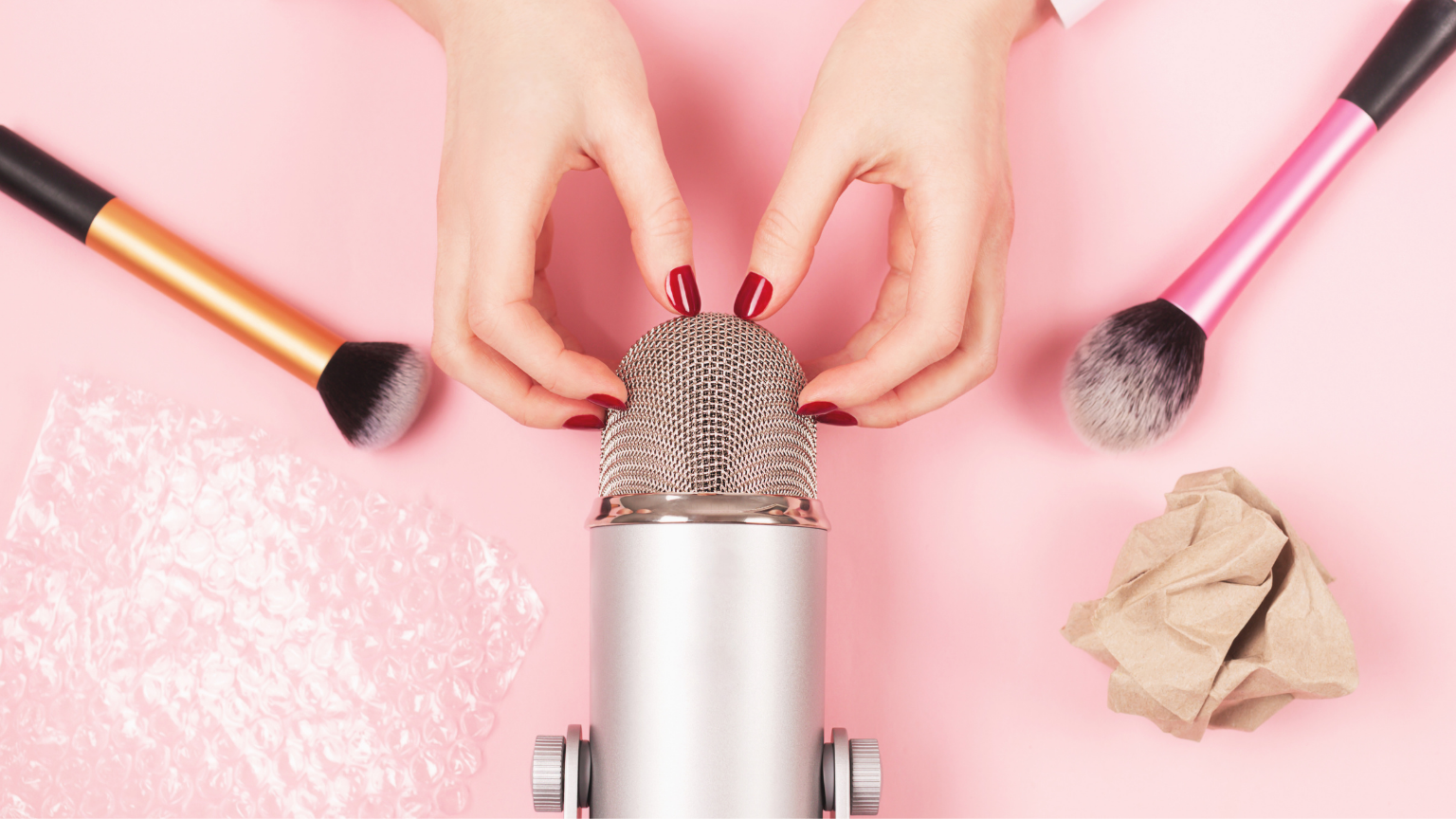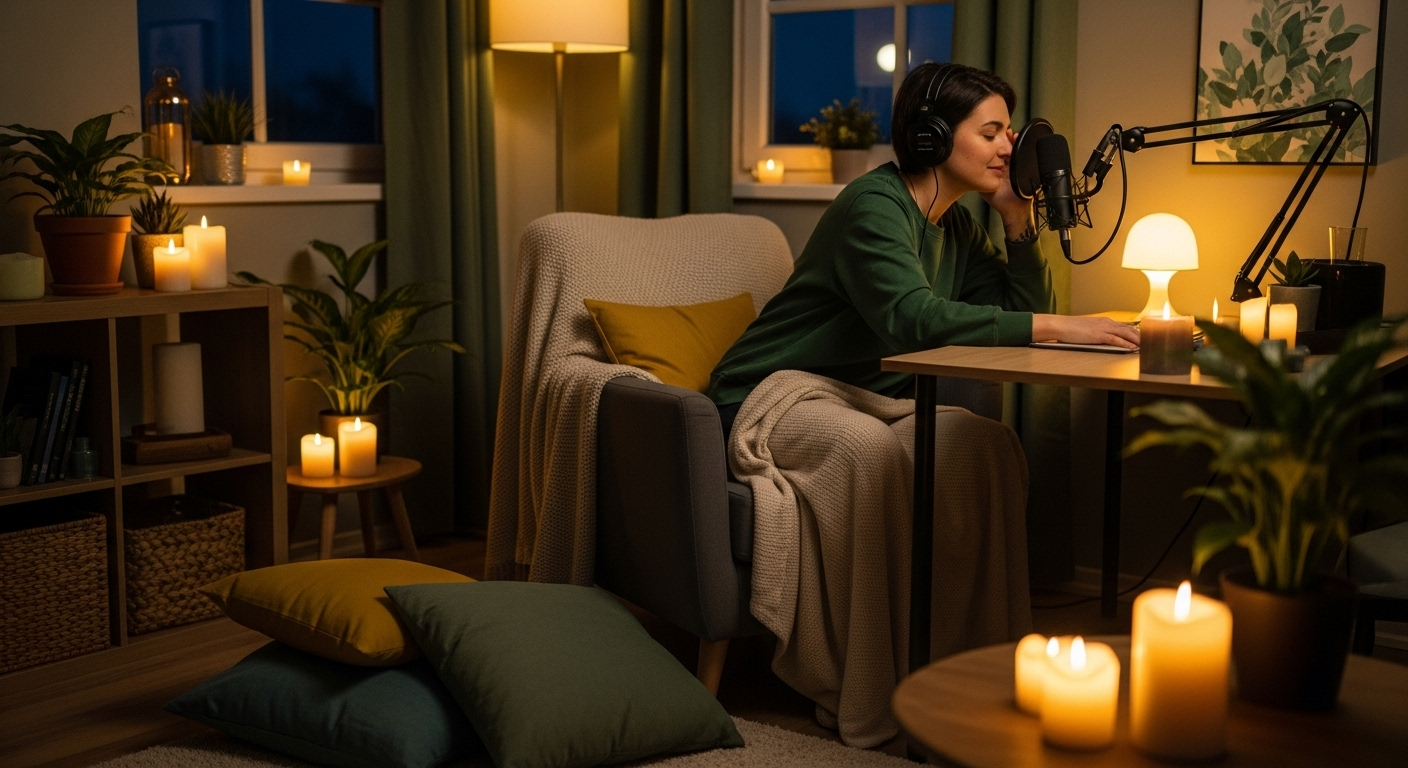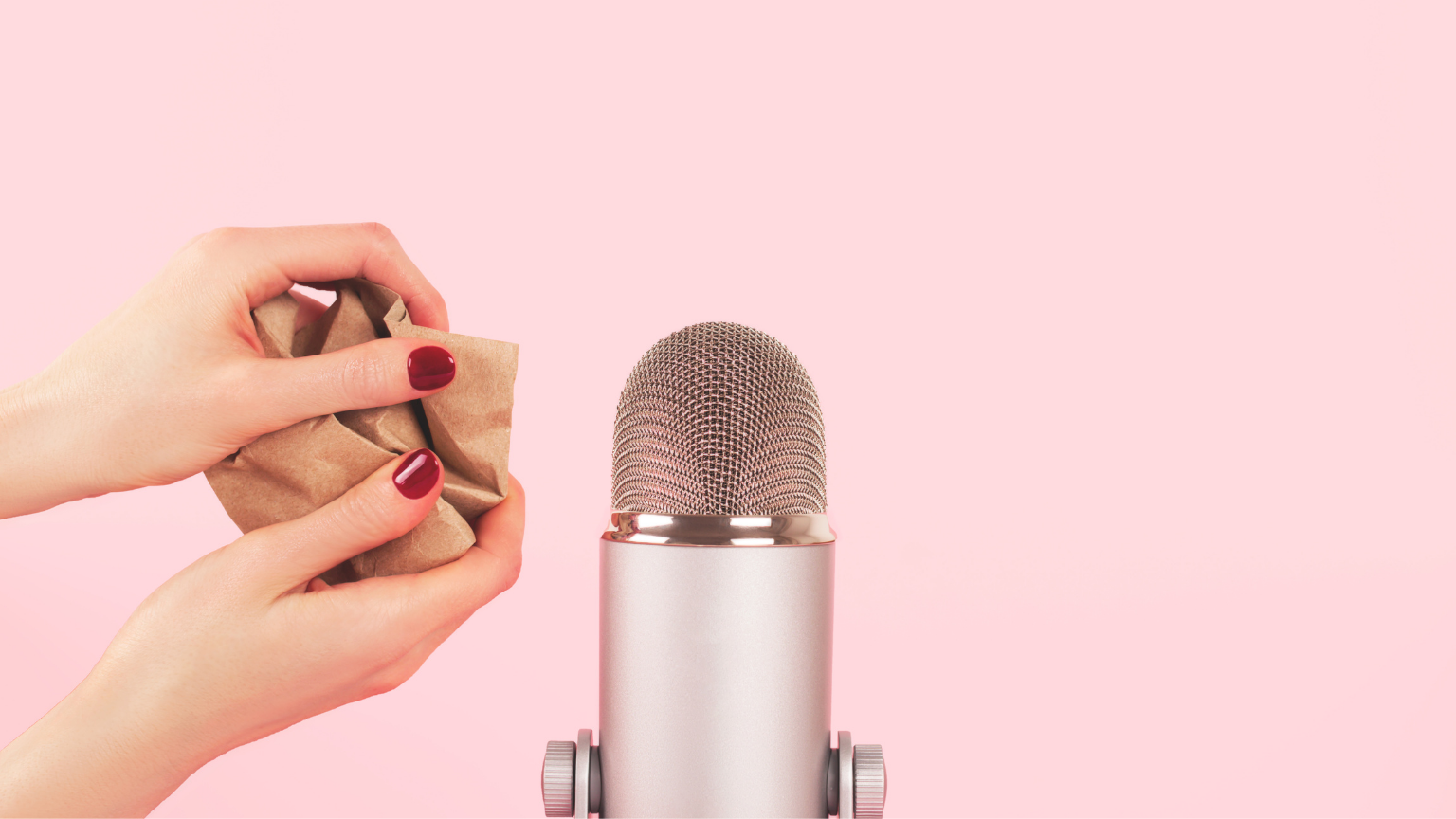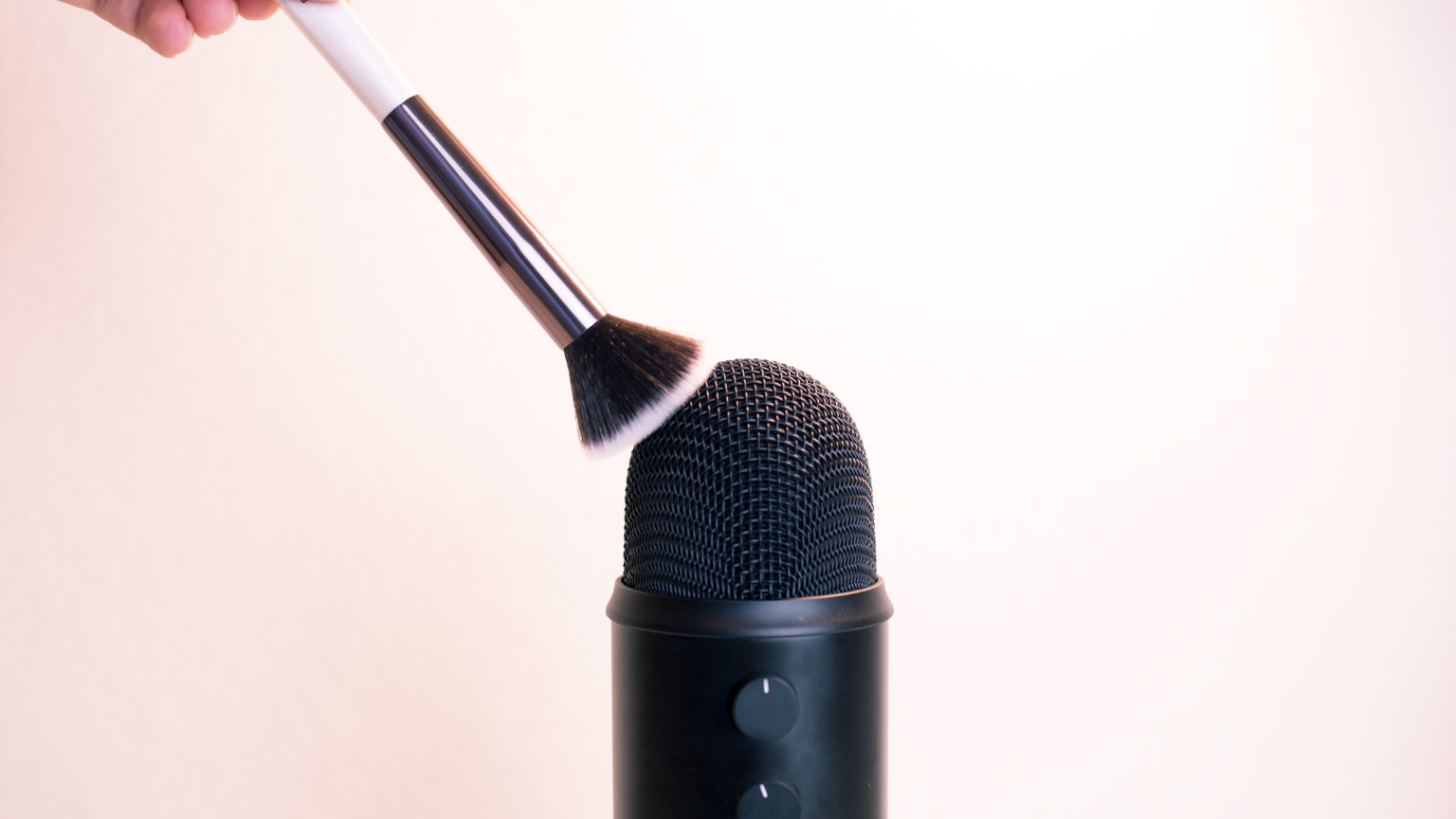

Tooba Siddiqui
Wed Aug 27 2025
7 mins Read
A trend that started in 2009 and 2010 is still going strong and has built its own community. Autonomous Sensory Meridian Response, aka ASMR, gained popularity for its stress-relieving and calming experience. After the introduction of other video-sharing platforms such as TikTok and Instagram, ASMR was no longer just a YouTube trend — it became a global sensation.
What is ASMR?
The term ‘ASMR’ was coined in 2010 to represent the tingling feeling we experience when completely relaxed. Audio and videos that contribute to such relaxation often help in reducing anxiety and keeping the heart rate stable. However, not everyone has the same reaction or feels relaxed upon hearing or watching ASMR videos and audios. For some, it could trigger disgust, irritation, or even feelings of being creeped out. But those who benefit from such sounds and visuals often find ASMR to be soothing and something that helps them sleep better. ASMR is a personal and psychological experience, which is different for everyone. Most common ASMR triggers are:
- Whispering: in such ASMR videos and audios, the creator maintains a soft tone and keeps their mouth very close to the microphone when speaking.
- Tapping: in these ASMR videos and audios, the creator taps their fingers or nails on different surfaces and objects such as wood, metal, or glass.
- Crinkling: in these ASMR videos and audios, the creator usually folds, crumples, or crinkles different materials such as plastic, paper, or even fabric to create soothing sounds.
- Roleplay: in these ASMR videos and audios, the creator narrates or shows real-life experiences such as a visit to doctor, a hair stylist, or a spa.
- Visuals: in these ASMR videos and audio, the creator produces sounds through slow and gentle hand movements, such as hair brushing, to stimulate certain audio triggers. As the trend of ASMR videos continues to grow, many new and professional content creators are now producing such content to gather more viewers. While many are looking for quick and hassle-free methods to create high-quality ASMR videos, such as an AI video generator and AI video editor.
How to Make ASMR Videos with AI
Creating ASMR videos through AI helps streamline the workflow with reduced product cost and higher quality output. Such AI video generators help both beginner and professional creators to start and scale their ASMR video content. Here’s how you can start with Imagine Shorts:
Step 1: Select Your ASMR Trigger
The choice of trigger determines how your audience will react and how your content influences them. Since each trigger generates a different feeling, make sure your choice doesn’t cause aversive reactions.
- If you opt for a whispering trigger, jot down the lines you want to narrate and review and rehearse to practice the soft and gentle tones.
- If you opt for tapping or crinkling trigger, try doing that first off-screen and test more objects to find out the right materials.
Step 2: Scripting or Planning
Make sure your video script aims to help the viewer relax and be completely immersed in a defined atmosphere. Scripting sets the theme, tone, and transitions.
Step 3: Recording
If you are starting out with ASMR, AI video generator like ImagineArt allow you to generate ASMR sound effects and video content. ImagineArt also has music and voice features to sync the audio with the visuals.
Step 4: Video Finalization
You can further edit your video on ImagineArt Video Editor to ensure smoother transitions and proper synchronization of audio and video. Adjust the music and sound effects and balance them. Add visual and sound effects to further refine the video quality.
Step 5: Download
Once your video is finalized, export it in your preferred format and size.
ASMR Video Best Practices
Be it an ASMR video of a few minutes or an hour-long audio, the goal is to make it engaging and attention-grabbing. Here’s how you can make your ASMR video effective:
- Sound Quality: Audio is the heart of the ASMR experience. Make sure the audio is crisp, with no distortion, and free from any noise. Practice and rehearse your scripts before pressing the record button.
- Pace: The purpose of ASMR video is to help the viewer relax, so make sure the transitions and scenes are slow-paced. Sudden changes or abrupt cuts can impact the relaxing experience of the viewers.
- Clean and Simple Visuals: The visuals shouldn’t be distracting or overwhelming. Make sure the close-up visuals don’t pixelate on screen and keep them minimalistic to maintain deep absorption of the viewer.
- Viewer Engagement: To make the ASMR experience more personal, you can ask the viewers questions about the triggers, their preferences, and or for video suggestions.
ASMR Video Examples
All ASMR videos and audios have one simple goal: promote relaxation. Here are some of the most popular ASMR categories to inspire you:
1. Whispering ASMR Video Example
 These videos include audios in a soft, calming tone, whispering affirmations, storytelling, motivational quotes, or mouth sounds such as exhalations, lip smacks, and tongue sounds. Whispering helps in calming down and unwinding.
These videos include audios in a soft, calming tone, whispering affirmations, storytelling, motivational quotes, or mouth sounds such as exhalations, lip smacks, and tongue sounds. Whispering helps in calming down and unwinding.
2. Tapping ASMR Video Example
 These ASMR videos include tapping fingers, nails, or even knuckles on different materials, textured surfaces, and objects. It could vary from tapping on a ceramic jar to a metallic plate. The intensity of tapping varies from fast to slow and can include scratching and whispering to improve the listening experience. It helps improve focus, reduce anxiety, and fall asleep.
These ASMR videos include tapping fingers, nails, or even knuckles on different materials, textured surfaces, and objects. It could vary from tapping on a ceramic jar to a metallic plate. The intensity of tapping varies from fast to slow and can include scratching and whispering to improve the listening experience. It helps improve focus, reduce anxiety, and fall asleep.
3. Crinkling ASMR Video Example
 These videos feature crumpling and crinkling of various materials such as paper, plastic, aluminum foil, cellophane, and even gift wrappings. The crinkling varies from soft to aggressive crumpling, while alternating between light squeezing and loud scrunching. This texture-based sensory sound helps induce a feeling of satisfaction and calm among the viewers and listeners alike.
These videos feature crumpling and crinkling of various materials such as paper, plastic, aluminum foil, cellophane, and even gift wrappings. The crinkling varies from soft to aggressive crumpling, while alternating between light squeezing and loud scrunching. This texture-based sensory sound helps induce a feeling of satisfaction and calm among the viewers and listeners alike.
4. Roleplay ASMR Video Example
 In rolepaly ASMR, the creators play the role of different characters to create a more engaging viewing experience. The creator can act as a makeup artist, hairdresser, masseuse, or medical expert to imitate a real-life scene. The video is often paired up with soft-spoken reassurance, compliments, and instructions to enhance the experience. Sounds of hair styling tools, medical equipment, tapping, and writing evoke a relaxing feeling.
In rolepaly ASMR, the creators play the role of different characters to create a more engaging viewing experience. The creator can act as a makeup artist, hairdresser, masseuse, or medical expert to imitate a real-life scene. The video is often paired up with soft-spoken reassurance, compliments, and instructions to enhance the experience. Sounds of hair styling tools, medical equipment, tapping, and writing evoke a relaxing feeling.
5. Visual ASMR Video Example
 In visual ASMR videos, there are sight-based triggers that includes visual aesthetics and intentional movements. Slow-motion movements, waving feathers, finger tracing, painting, stacking, or plucking help create a hypnotic experience for the viewers. These eye simulations create a meditative and calming experience without sound or any noise.
In visual ASMR videos, there are sight-based triggers that includes visual aesthetics and intentional movements. Slow-motion movements, waving feathers, finger tracing, painting, stacking, or plucking help create a hypnotic experience for the viewers. These eye simulations create a meditative and calming experience without sound or any noise.
6. Soap Cutting ASMR Video Example
The satisfying sound of knife cutting through the soft soap coupled with smooth and repetitive hand movements help viewer de-stress. The rhythmic nature of these videos add to the calming effect. For some, it might evoke nostalgia, reminding of them of innocent childhood days when soap was more of a toy during bath time. Also, these videos can help creators go viral, if they are building an audience for their ASMR channel.
7. Glass Breaking ASMR Video Example
Unlike the soft sound of whispering ASMR, the glass breaking ASMR videos are known are their cathartic effect of helping listeners release stress and tension. The sudden impact creates a sharp sound while the shards of broken glass adds to the visual element of such videos. The dramatic aspect of these videos help creators gain a significant spectacle for their content.
8. Kinetic Sand Cutting ASMR Video Example
The grainy sound has a mesmerizing imapct on the listeners, while the smooth texture adds to the visual appeal. The deliberate slicing of objects made out of kinetic sand creates a tactile and soothing experience. These videos has a playful aspect to them, evoking comfort and nostalgia. The hypnotic qualities of these videos contribute to their virality.
How to Make Money from ASMR Videos
With the ASMR trend growing and evolving, creating these videos is a lucrative endeavor. Here’s how you can generate some revenue and income from these immersive experiences:
Platform Monetization:
Video-sharing platforms TikTok, YouTube, and Instagram allow creators to generate revenue through ads. You can also join the YouTube Partner Program and earn some income based on clicks and engagement, if your channel has a thousand subscribers and 4,000 watch hours. Learn more about YouTube Shorts Monetization, TikTok Monetization, and Instagram Monetization
Sponsorships:
Through social media platforms, you can collaborate with other professionals and brands such as somnologists, sleep aid businesses, healthcare brands, wellness experts, and feature their products in your content. Donations and Crowdfunding: Other than the social media platforms, you can create your channel on Patreon to earn through subscription fees to access exclusive content.
Affiliate Marketing:
You can include product links in your video to earn through affiliate links. These products could include different sleeping and relaxation applications, headphones or microphones, or sleep masks. You can also link your video to the services of a certain sleep or anxiety expert.
Freelance Work:
High-quality ASMR videos can open the door to freelance opportunities where brands or other content creators may hire you to produce custom ASMR content.
Conclusion
Creating ASMR videos is a highly rewarding process, and with the help of AI tools like ImagineShorts, you can easily produce professional-quality videos that captivate and relax your audience. So start creating and earning from ASMR videos!

Tooba Siddiqui
Tooba Siddiqui is a content marketer with a strong focus on AI trends and product innovation. She explores generative AI with a keen eye. At ImagineArt, she develops marketing content that translates cutting-edge innovation into engaging, search-driven narratives for the right audience.